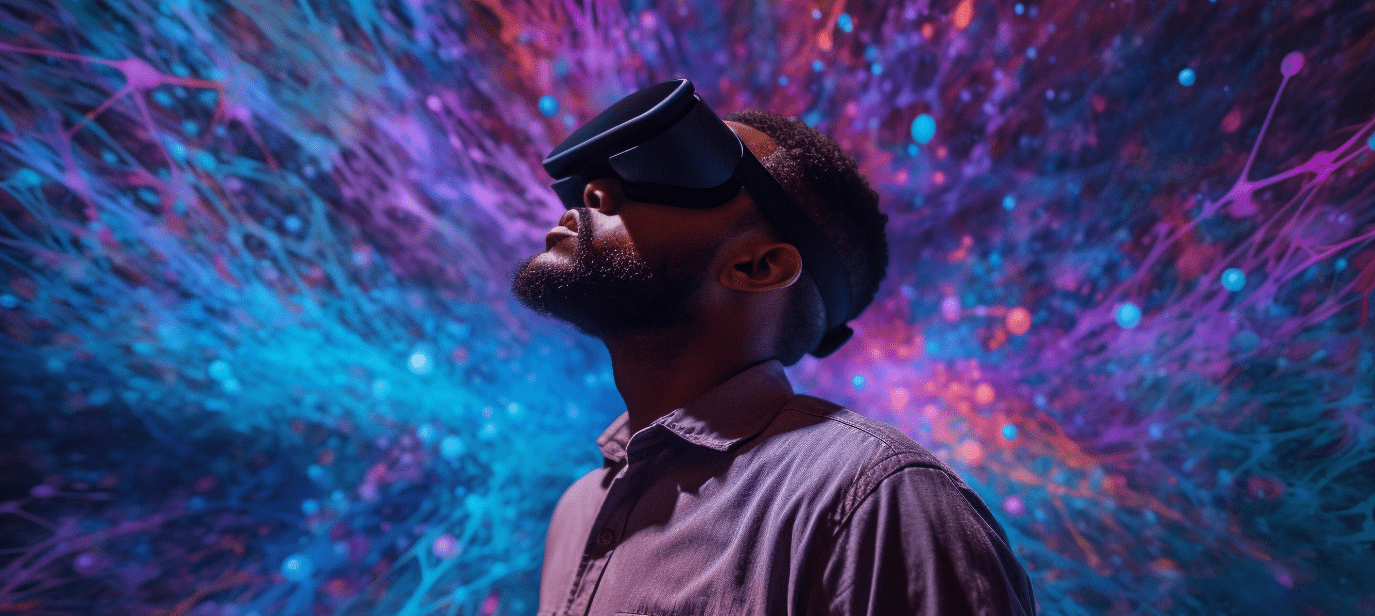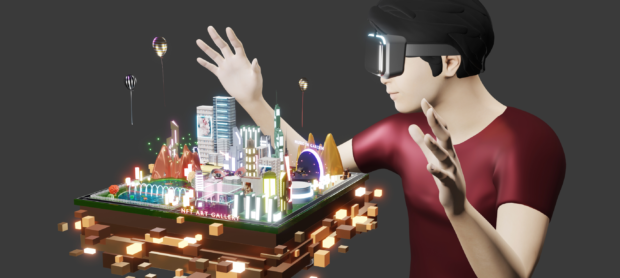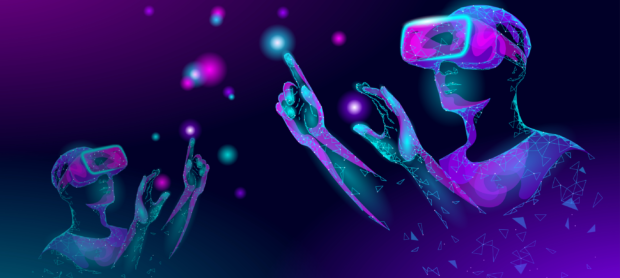Step into the dizzyingly captivating universe of Augmented Reality, or AR for short. This world-bending technology redefines the very nature of our digital interaction, creating an awe-inspiring fusion of the tangible and the virtual. Picture this: you’re not simply staring at a flat screen, but instead, you’re witnessing digital specters superimposed upon your immediate surroundings. As a result, the line separating the physical world from its digital counterpart blurs into insignificance, paving the way for a level of engagement that is not just immersive, but also highly interactive.
Think about AR – the scope it holds to shake up various industries is nothing short of staggering. It’s not merely about diving into a game of Pokémon Go, which, granted, offered a tantalizing glimpse into the power of AR. Rather, it’s about reshaping the very fabric of our day-to-day lives. Learning, working, even healthcare—all stand to be reimagined through the lens of Augmented Reality.
Visualize a classroom where students traverse the cosmos without stepping outside the room. Or, consider a world where mechanics can see step-by-step instructions appearing directly on the machinery they’re tinkering with. Take it a step further and imagine surgeons being granted access to vital, real-time data mid-operation. All this and more, are made possible by the magic of AR.
This guide is your entry point into the fascinating world of augmented reality, whether you’re a budding developer, a tech expert trying to further your career, or simply a tech fan interested in AR.
What is Augmented Reality?
A revolutionary technology, augmented reality (AR) projects digital material, such as pictures, movies, audio, or 3D models, onto the physical world. AR improves the current world by adding computer-generated aspects, as opposed to Virtual Reality (VR), which entirely simulates the environment. By combining the real and virtual worlds, this experience is one-of-a-kind, engaging.
Smartphones, tablets, smart glasses, and dedicated AR headsets are just a few of the gadgets that allow users to experience augmented reality. You’ve encountered augmented reality (AR) if you’ve ever used a Snapchat filter to add dog ears to a selfie or played Pokémon Go and chased a virtual monster around your neighborhood.
Let’s now examine the two main subtypes of AR, marker-based and markerless, in more detail:
Marker-Based AR
As the name implies, marker-based AR uses certain visual cues to prompt the display of virtual material. These identifiers might be anything from unique graphics to QR codes. These markers are detected by the device’s camera, which then overlays the AR content on top of it.
If you scan a picture of a dinosaur in an instructional book based on augmented reality, the dinosaur may come to life in 3D and provide an interactive learning experience. Due to the marker’s precision and stability, which serves as a fixed point of reference for locating the virtual content, this sort of AR is quite popular.
Markerless AR
Markerless AR, sometimes referred to as location-based or position-based AR, on the other hand, doesn’t depend on tangible markers. Instead, it provides information based on position or movement using technologies like GPS, digital compasses, or accelerometers. Then, using this knowledge, virtual information is superimposed over the actual environment.
A typical example is the well-known game Pokémon Go, in which digital animals are positioned at various GPS positions to entice players to search their surroundings for them. Other examples are augmented reality navigation applications that superimpose instructions on the outside view, or interior design apps that let users install virtual furnishings inside their houses.
The choice of marker-based or markerless AR depends on the needs of the application and each has certain benefits. Understanding these categories will enable you to make well-informed choices as you start your AR development journey.
AR Development Tools and Technologies
Utilizing a variety of tools and technologies, AR apps are made to provide interactive, immersive experiences. Let’s examine some of the most often-used tools and technologies in the realm of augmented reality development.
The game engines
Unity: This is one of the most widely used game development engines, known for its versatility and user-friendly interface. You can create AR applications using this cross-platform solution for a variety of platforms, including Android, iOS, Windows, and more. Unity offers comprehensive support for AR development, including interoperability with plugins and frameworks designed specifically for AR.
Unreal Engine: Another potent platform for AR creation is Unreal Engine, created by Epic Games. For applications where visual fidelity is important, it is a wonderful option since it has high-quality graphics capabilities. Developers with experience in C++ may use Unreal Engine since it also supports C++ scripting.
Development Platforms for AR
Vuforia: Developers may create immersive AR experiences using a broad range of tools on the full Vuforia AR development platform. It excels at object detection, enabling your AR app to recognize and interact with actual world things. Vuforia can monitor picture markers, 3D objects, and even sections of space.
Wikitude: This is an additional reliable AR platform that provides tools for creating complex AR apps. It offers a range of augmented reality (AR) experiences, including as location-based augmented reality, picture and object tracking, and immediate tracking, which enables augmented reality (AR) experiences without any pre-established markers or locations.
Additional Crucial Technologies
3D models: In AR applications, virtual components are often created using 3D models. These models may be created using a variety of 3D modeling applications, such as Blender, 3DS Max, or Maya, then imported into the game engine for usage in the AR app.
Shaders: In an AR app, shaders are scripts that regulate how the 3D objects are rendered. They specify the 3D models’ color, brightness, surface texture, and other visual elements, which improves the AR experience’s overall visual quality and realism.
Sensors: As they aid in tracking the user’s motions and surroundings, sensors are essential to AR applications. Cameras for recording the actual environment, GPS for location information, accelerometers, and gyroscopes for determining the position and movement of the device are some of the common sensors used in augmented reality.

The Steps of AR Development
The process of building an AR application is thrilling, filled with innovative difficulties and satisfying results. There are common steps that every AR development process follows, while the specifics may vary based on the project. Let’s examine these actions more thoroughly.
1. Planning
A strategy is the foundation of any successful augmented reality application. Your application’s goal—what you hope to accomplish with it and how it will help users—will be defined at this phase. You’ll also choose the target market, which will affect a lot of decisions later on, including the design, level of difficulty, and user interface. Sketching out the main features and capabilities of the app is another step in the planning process. Consider the marker-based vs. markerless AR you’ll be employing, as well as the user behaviors the AR features will encourage. Can they manipulate them or move them? Will the AR components respond in any manner to the surroundings in real life?
2. Design
Your AR app begins to visibly take shape throughout the design phase. Developing visual assets, building user interfaces, and producing 3D models are all included in this. The objective is to produce an immersive, intuitive, and engaging augmented reality (AR) experience that appeals to your target market. The interactions between users and the AR elements, as well as how these elements behave, must be designed. This might entail developing sound effects, making animations for the AR components, and specifying interaction guidelines.
3. Development
This is the phase in which your design is really realized. Here, you’ll utilize the 3D models, shaders, and other assets you produced during the design stage together with your selected AR platform and game engine to develop the app. Programming is used in this situation. You may be programming in C#, C++, or another language, depending on the tools you’re using. Setting up AR tracking, developing user interaction logic, and fusing AR components with the real-world view are all part of this step.
4. Testing
The creation of AR applications must include testing. It guarantees that your software functions as planned and offers a positive user experience. The performance of the app must be evaluated, along with the accuracy of the AR tracking and the responsiveness and clarity of the interactions. To make sure it functions properly for all prospective users, you must test the app under various circumstances and on several platforms. In order to find any problems or potential areas for improvement that you may have overlooked, you could also wish to do user testing.
5. Deployment
Deploying your AR app completes the process. In order for consumers to download and install it, it must be submitted to the relevant app store, such as Google Play for Android applications or the App Store for iOS apps. Before you can release your app, you must satisfy the app store’s submission criteria, which may involve giving the app a description, images, and other details. Once your app is online, you’ll need to keep an eye on user feedback and be prepared to make any necessary upgrades and enhancements.
Conclusion
In fact, augmented reality is a game-changing technology that is revolutionizing how we interact with the digital world. It is more than simply a trendy term. With applications in everything from gaming and education to healthcare and beyond, augmented reality has enormous promise. Our daily lives are about to undergo a transformation because to augmented reality’s capacity to create immersive, interactive experiences.
We hope this tutorial has provided you with a strong basis for your future endeavors in the field of augmented reality development, giving you a better grasp of the AR environment, the tools and technologies available to you, and the steps involved in creating an AR app.
Keep in mind nonetheless that you’re not traveling alone. Helping innovative people like you achieve your aspirations for augmented reality is something we at Eventyr are passionate about. We’re prepared to work under your direction and can offer the knowledge, tools, and direction you require to successfully complete the AR development process thanks to our team of highly qualified individuals.
We are here to support you, whether you are just getting started or trying to scale an established AR project. We’re interested in finding out more about your concepts, comprehending your vision, and discovering how we can assist in making your AR dream a reality.
Go forward with your AR experience by making the following move. Contact us right now to start this thrilling journey with us. Your ideal augmented reality application is less far off with Eventyr by your side than you would believe!




